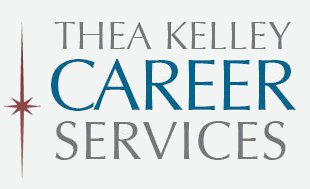 When you have a networking one-on-one during your job search, should you leave behind a resume? Probably not. Usually it’s better to leave a networking bio instead.
When you have a networking one-on-one during your job search, should you leave behind a resume? Probably not. Usually it’s better to leave a networking bio instead.
Why?
- Offering a resume may make your networking partner feel pressured, as if though you’re imposing on them to find you a job. Focus on building relationship and sharing information; you’re not applying for a job right now. (Read my article, “Networking: Organizations vs. Openings.”)
- You can’t target your resume for a job opening that doesn’t yet exist. Providing a bio leaves the door open for you to submit a targeted resume later, when a specific job opportunity opens up.
- Unlike a resume, a bio can appropriately include a photo, which can help your contact remember you.
What’s in a Networking Bio?
There are no hard-and-fast rules about what information to include in a bio. What information about you will help someone remember you and your background? What kind of description would encourage them to keep you in mind as a resource?
A bio can be a bit less formal than a resume. For example, you can write it in first person (referring to yourself as “I” rather than by name), or if you write it in third person (“Maria Miller is …”) you can insert quotes from yourself.
Limit your bio to one page or less. Be concise.
You can include some of the same information that’s in your resume, but make sure the bio is engaging and conveys a sense of who you are as a person. Ask yourself questions like the following:
What is my unique selling proposition or brand? What facts about me give evidence of that?
- What’s interesting or impressive about my career path?
- What story would illustrate my talents and skills?
- What am I passionate about, professionally?
- What do I love about my field? about my current employer? about my team?
This will give you ideas toward writing a relevant and engaging bio.
When to Use a Networking Bio
A bio is useful in a career research conversation or informational interview with someone you’ve never met. You might provide it via email before the meeting and/or hand them a hard copy as you’re leaving.
However, in an informational interview with a hiring manager who could potentially give you a job, a resume is actually more appropriate.
Just don’t count on the bio or resume to keep you at top of mind with your new contact. A crucial part of networking is knowing how to turn info interviews into relationships.
Bio or LinkedIn Connection Request?
“Why provide a bio,” you may wonder, “when the person can just look me up on LinkedIn?” Certainly, a LinkedIn connection request is a good next step after a networking meeting. But it’s quite possible that your new contact will simply click “Accept” and move on without looking at your profile. Providing a bio before or during the meeting may get more attention and help them remember your background and interests. At the very least, it’s an additional touchpoint.
A good networking bio reinforces an impression of you as someone who is good to know and keep in touch with. (This post was originally published in 2013 and has been updated for the 2020s.)

